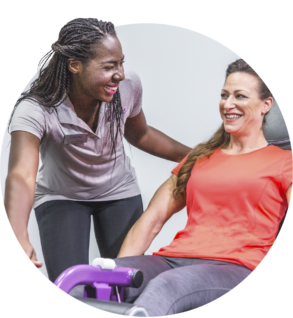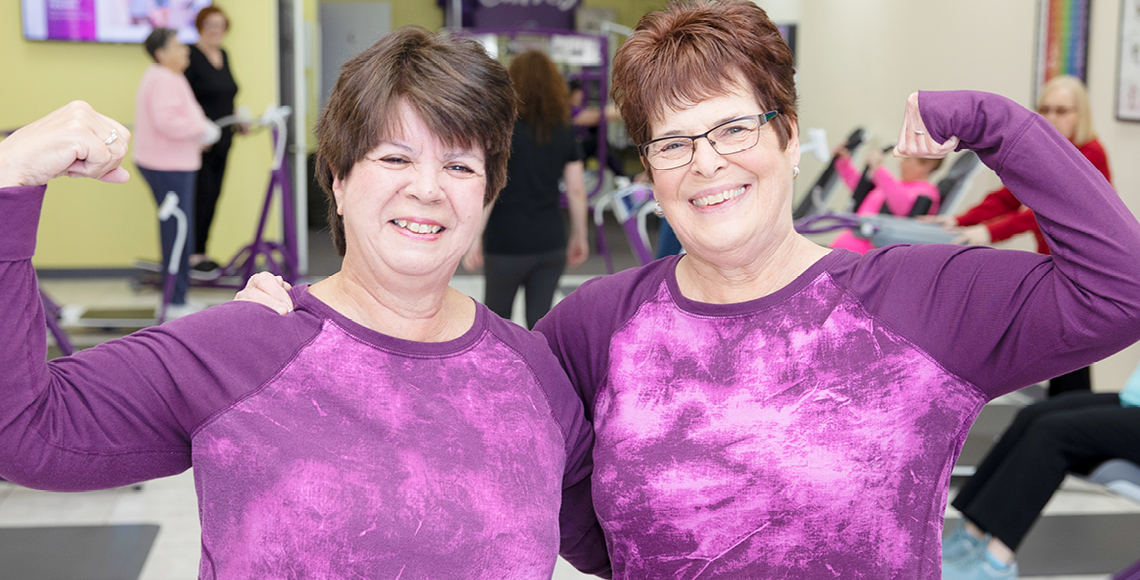Help Reduce Your Risk of Injury with Strength Training
Sprains, strains, and knee injuries are among the most common sports injuries, but even the non-athlete can twist an ankle on uneven terrain, suffer a back strain lifting and carrying a too-heavy box of books, or slip on a slick surface, fall and crack a bone. And then there are our knees, which are subject to stress every day as we walk, go up and down stairs, exercise, or play sports.
Injuries are painful, but they also take us out of the game, whether that’s literally a game of golf or the activities that are a regular part of life, such as walks in the park, Curves workouts, and even just getting around at home or the office. You want to avoid injury, and the best way to do that is with regular strength training.
“Strength training offers multiple benefits for women of all ages, including increasing bone density and muscle mass,” explains Jonathan Saluta, MD., an orthopedic surgeon and sports medicine specialist at Good Samaritan Hospital in Los Angeles. It also builds core strength, improves balance, and helps protect joints. All these benefits translate to lower risk of injuries.
In a 2013 study, researchers in Copenhagen looked at 26,610 people who engaged in strength training, stretching, balance exercises, or programs that combined more than one exercise type. The key results: general physical exercise lowered injuries by 37 percent; stretching reduced injuries by only 4 percent; and strength training lowered risk by a whopping 68 percent, making it the clear winner in terms of injury-prevention.
Here’s how strength training can help you avoid pains, strains, and other injuries.
Powers your core
“Properly executed resistance training helps keep core muscles strong,” Dr. Saluta says. That muscle group, which includes your abs as well as side and back muscles, wraps around your torso like a corset and contributes significantly to your body’s stability for standing, walking and in all the moves you make.
Helps improve balance
Strength training builds stronger muscles that can more effectively keep you vertical, but it also may increase proteins in muscle fibers that contribute to a quick reaction time, Dr. Saluta says, useful in situations that might topple you, such as uneven terrain or slippery footing. Strength work can also help properly align your spine and straighten your posture. “This restoration of the center of gravity diminishes sway while walking and reduces your risk of a fall,” Dr. Saluta says.
Corrects imbalances
“Muscle imbalances between antagonist [opposing] muscles such as the flexors [quadriceps or front of the thigh] and extensors [hamstrings, back of the thigh] can lead to back injuries; you can correct these imbalances with strength training,” Dr. Saluta says.
Protects your joints
“Strength training reinforces the muscles, tendons, and ligaments around major joints like the hip and knee,” Dr. Saluta says. “This helps protect these joints from injury.” If you want to help prevent or even ease knee pain, for example, get yourself to Curves.
Builds bone
“Strength training exercises, through the principles of physics, strengthen bone naturally,” says Jeffrey Schildhorn, MD, orthopedic surgeon in New York City. “Bone responds to physiological loading by increasing the resorption of old bone and formation of new bone,” Dr. Saluta explains. Resistance training performed regularly helps prevent osteoporosis, and this becomes especially important in case you do lose your balance.
The Curves Solution
While also offering a cardiovascular component, the Curves circuit and all the Curves classes*—Boxing, Balance, Cardio, and so forth—are grounded in strength training, hitting all the major muscle groups from head to toe. Keep your body injury-free and make a commitment to Curves.
The Curves women’s gym workout is convenient, combining strength training and cardio plus stretching – all in just 30 minutes – to strengthen your whole body. For more information about Curves and the full body workouts the Curves Circuit provides, visit ‘Why Curves’.
*At participating locations only.







